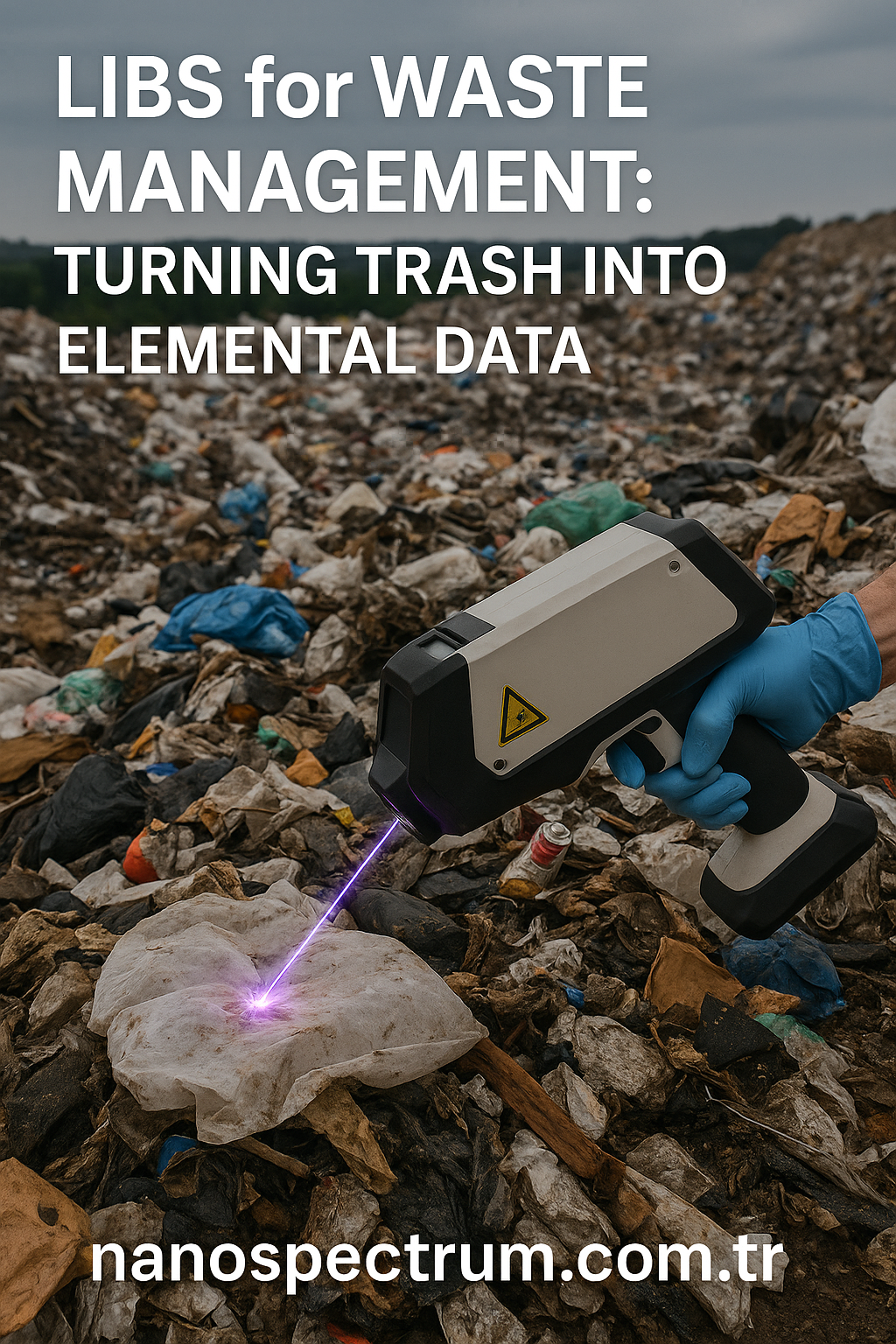LIBS for Waste Management: Turning Trash into Elemental Data

As global waste levels surge, LIBS is emerging as a rapid, non-contact method to sort, classify, and recover valuable materials from trash streams.
The Growing Waste Crisis
With over 2 billion tons of solid waste produced annually worldwide, efficient sorting and recycling are critical. Traditional methods often rely on mechanical separation or X-ray fluorescence, which can be limited by speed or material type. LIBS offers a smarter alternative.
How LIBS Helps in Waste Sorting
- Fast Detection: Millisecond-scale analysis for each object on a conveyor line
- Non-Destructive: No need to crush or dissolve materials
- Multi-Element Identification: Detects a wide range of metals and trace elements
- On-the-Fly Decision Making: Connected to sorting actuators for real-time classification
Typical Waste Streams Analyzed with LIBS
- Electronic Waste (E-Waste): LIBS can detect gold, copper, and rare metals on circuit boards
- Metal Scrap: Aluminum, steel, brass, zinc, and stainless steel can be rapidly sorted
- Battery Recycling: Elements like lithium, cobalt, and nickel can be detected and recovered
- Plastic Streams: Metal additives and fillers in plastics can be identified for purity checks
Case Study: LIBS in Automated Sorting Lines
Recycling plants in Europe have deployed LIBS-equipped conveyor systems where sensors scan each object and trigger air jets to divert materials based on their spectral signatures. This has increased material recovery rates by 20–30% compared to legacy systems.
Advantages Over Other Technologies
| Feature | LIBS | XRF | Optical Sorting |
|---|---|---|---|
| Speed | ✔️ Very High | ❌ Moderate | ✔️ High |
| Light Element Detection | ✔️ (e.g. Li, Be) | ❌ | ❌ |
| Material Type | ✔️ Metals, ceramics, plastics | ✔️ Metals | ❌ Surface only |
| Portability | ✔️ High (also in lab setups) | ❌ | ✔️ |
Challenges in Waste Applications
- Surface coatings or dirt can affect readings
- Requires real-time calibration for mixed materials
- Moving targets may need precise timing and focus control
Conclusion
LIBS is redefining how we manage waste. By turning random objects into data points, it helps create cleaner streams, higher recycling efficiency, and greater material recovery. As sustainability becomes a priority, LIBS will play a vital role in transforming the trash of today into the raw materials of tomorrow.